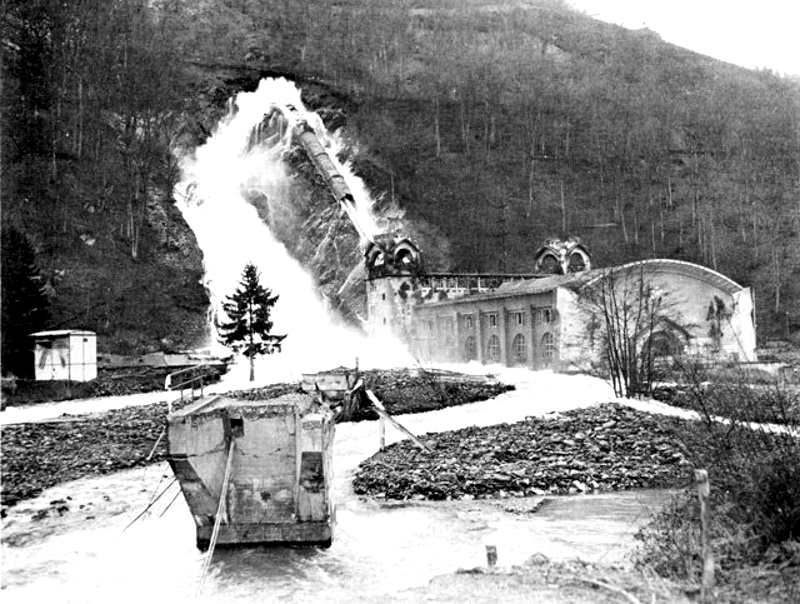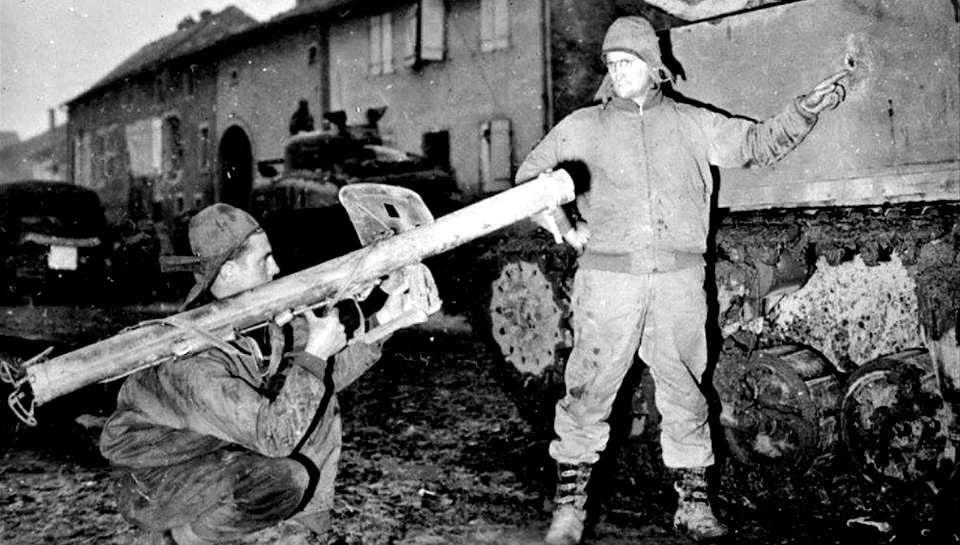Document source: The Germans Ardennes Counter-Offensive December 16, 1944, to January 2, 1945, Ardennes Alsace Campaign, Type of operation: Army Group Offensive, Advanced Infantry Officers Class #1, Major Keith H. Barber. Infantry School, Fort Benning, Georgia.
INTRODUCTION
On June 6, 1944, the Allied Armies under the command of Gen Dwight D. Eisenhower came over the beaches of Normandy, embarked upon the invasion of the continent to bring to a successful conclusion the war in Europe by the destruction of the German field forces in the West. Seven weeks later, they had captured the Port of Cherbourg, cleared the Cotentin Peninsula of enemy forces, and were disposed generally across the base of the Peninsula, a distance of approximately 60 miles. Breaking out of the narrow confines of the Cotentin, they swept eastward and northward through France and Belgium, closely pursuing the defeated German Armies.
By September 12, 1944, they were disposed generally along the Maginot Line in the South and the West Wall in the North, extended from Switzerland to the North Sea. Deeming it advisable to continue carrying the war to the enemy in spite of shortages of men and supplies, the Allies had by a series of offensives succeeded in dosing up to the German Frontier, and had penetrated the West Wall in two areas, near Aachen on the North and the Saar in the South. The Germans were fighting on three fronts the Eastern, or Russian, the Southern, or Italian and the Western Front. Severely defeated in France the preceding summer, losing ground steadily on the Russian and Italian fronts, they were hard-pressed to meet the demands upon their manpower and supplies. Their total defeat seemed imminent.
Suddenly, on December 16, 1944, four German Armies emerged from the shelter of the West Wall to launch an offensive that was to cause Hodges’ 1-A to reel back in confusion and disorder; and to force the Allies to concentrate the major elements of three additional armies to limit the penetration and restore the lines. The events of the proceeding summer had forced upon the Allied High Command certain decisions, which in the process of execution, set the stage across which the once mighty Nazi war machine was to launch its last great offensive in World War II. It is necessary, therefore, order to properly present the background, and to review to some extent, those events. It is also of value to examine the German plans and preparations which enabled them to regain for a short period, the initiative they lost when the Allies invaded the continent.
ALLIED SITUATION
By mid-September 1944, the Allied’ drive through Northern France had come to a halt as the tanks, out of gasoline, sputtered to a stop against the German West Wall The enormity of the success had caught the Allied High Command unprepared for full exploitation. Supply lines had been extended to a point where the proper supply of front-line units was impossible. Cherbourg was the only major port available to the Allies and extensive damage to the docking facilities and skillful use of the acoustic mine by the Germans precluded its fullest use. The bulk of the supplies was still being brought over the Beaches of Normandy. Once ashore the difficulties of transporting them 375 miles to the frontline divisions were enormous. Added to the German destruction of rail equipment and highway bridges was that inflicted by the Allied Air Forces in its Strategy of battlefield isolation. In the face of these difficulties, SHAEF must, to successfully prosecute the war, supply its armies during reorganization and accumulate sufficient supplies and materiel to support future offensives.

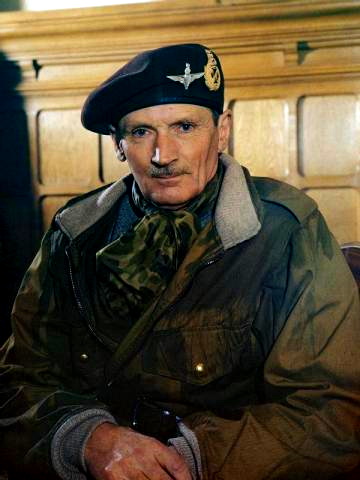 The Allied High Command was faced also with the decision of how best to penetrate the heart of Germany and bring to a successful conclusion the invasion of the continent. Two possible routes of advance were offered, and as usual, in such cases, two schools of thought existed as to the best approach. Field Marshall Montgomery, Commanding General of the British 21st Army Group, supported by other elements of the British High Command and British public opinion urged the utilization of the approach offered by the North German Plains
The Allied High Command was faced also with the decision of how best to penetrate the heart of Germany and bring to a successful conclusion the invasion of the continent. Two possible routes of advance were offered, and as usual, in such cases, two schools of thought existed as to the best approach. Field Marshall Montgomery, Commanding General of the British 21st Army Group, supported by other elements of the British High Command and British public opinion urged the utilization of the approach offered by the North German Plains  as the shortest and most logical route since its terrain favored the tactical use of armor. On the other hand, General Omar N. Bradley, Commander of the US 12th Army Group, ably supported by General George S. Patton, Commander of the 3rd Army favored the advantages offered by the Frankfort Gap. In as much as the Northern Route would be largely a British effort
as the shortest and most logical route since its terrain favored the tactical use of armor. On the other hand, General Omar N. Bradley, Commander of the US 12th Army Group, ably supported by General George S. Patton, Commander of the 3rd Army favored the advantages offered by the Frankfort Gap. In as much as the Northern Route would be largely a British effort 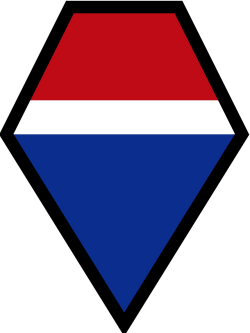 and the Frankfort Gap would be largely US much pressure was brought to bear upon the Supreme Commander by both protagonists. General Dwight D. Eisenhower arrived at a decision that included both proposals. He would close up to the Rhine River with all armies and endeavor to destroy the bulk of the German forces west of the river. There he would halt, regroup, and resupply and proceed to invade the heart of Germany by the northern route.
and the Frankfort Gap would be largely US much pressure was brought to bear upon the Supreme Commander by both protagonists. General Dwight D. Eisenhower arrived at a decision that included both proposals. He would close up to the Rhine River with all armies and endeavor to destroy the bulk of the German forces west of the river. There he would halt, regroup, and resupply and proceed to invade the heart of Germany by the northern route.

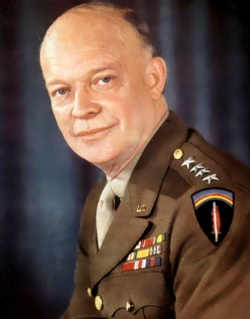 Whether or not the decision was wise will be a matter of debate for decades. It did, however, present many difficulties. In order to put the decision into effect it was necessary to carry on offensives along a large part of a 625-mile front. Adequate defenses had to be established over the remainder. Supplies must be accumulated to support the offensives. Reinforcements must be provided to maintain the strength of the front-line divisions. New divisions must be brought over from the United States in order to man adequately the long tortuous 625-mile front now held by the Allies. Accordingly, SHAEF (Supreme Headquarters Allied Expeditionary Forces) ordered the Commander of the British 21-AG to clear the Scheldt Estuary of German forces to make the Port of Antwerp, one of the largest ports in Europe, available to the Allies. Here a mass of highways and railroads branched out to the east, north, and south providing adequate means of transportation once the supplies were ashore. By November 3, 1944, FM Montgomery had cleared the area and by the latter part of November the port was in full operation.
Whether or not the decision was wise will be a matter of debate for decades. It did, however, present many difficulties. In order to put the decision into effect it was necessary to carry on offensives along a large part of a 625-mile front. Adequate defenses had to be established over the remainder. Supplies must be accumulated to support the offensives. Reinforcements must be provided to maintain the strength of the front-line divisions. New divisions must be brought over from the United States in order to man adequately the long tortuous 625-mile front now held by the Allies. Accordingly, SHAEF (Supreme Headquarters Allied Expeditionary Forces) ordered the Commander of the British 21-AG to clear the Scheldt Estuary of German forces to make the Port of Antwerp, one of the largest ports in Europe, available to the Allies. Here a mass of highways and railroads branched out to the east, north, and south providing adequate means of transportation once the supplies were ashore. By November 3, 1944, FM Montgomery had cleared the area and by the latter part of November the port was in full operation.
The reinforcement problem was not so easily solved, however. The demands upon manpower as the Allied units were disposed along the West Wall were enormous. Prior to the breakthrough at St Lo the line of defense extended from Lessay on the West Coast of the Cotentin Peninsula, in Normandy, roughly eastward through St Lo and Caen thence to the English Channel. The sector occupied by the US 1-A was approximately 40 miles in length. Its sector on December 1944, extended northward from the vicinity of Remich, south and east of Luxembourg to Grosbeek on the Meuse River north of Maastricht, a distanoe of approximately 155 miles. The southern portion of the sector traversed the Ardennes Forest area generally along the German Border. Eastward of this line lay the Eifel Area, the extension of the Ardennes topography into the Rhineland. In ages past, this mountain range was as high as the present day Alpes, but centuries of erosion had reduced it to an area of gently rolling with high pointed hills interspersed with narrow valleys. Numerous primary roads follow the valleys, secondary roads are almost nonexistent. It is ideally suited to defense. It is poorly adapted to offensive operations.
The northern sector of the 1-A offered better opportunities for the offense. As a result of an offensive launched on October 2, 1944, Aachen fell on October 21. Immediately, plans were made for regrouping resupply for a further offensive to gain the Roer River and Düren in Germany. Once these objectives were gained the approach across the plains to the Cologne-Bonn Area on the Rhine River was over terrain favorable to armor. Limited offensives were carried on prior to the offensive which opened on November 16. Gains were not substantial, due to bad weather and the stubborn resistance of the German troops. Casualties were extremely heavy.
It now became apparent that a crossing of the Roer River below Düren was impractical since the dams on the upper reaches of the Roer and on the Urft River, its tributary, remained in German hands. Efforts to destroy them by air had failed. Should the 1-A effect a crossing below these dams the Germans could by flooding the Roer Valley isolate the troops on the east bank leaving them to the mercy of the German 6.Panzer-Army laying in wait for the Roer crossing, on the plains in front of Cologne.

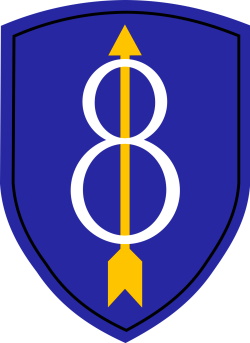 Accordingly, Gen Bradley directed that the dams be seized by an attack northeastward from the vicinity of Monschau toward Schmidt. This attack by the 2, 8, 78, and 99th Infantry Divisions with CCB of the 9th Armored Division was launched on the morning of December 13, 1944, and was continuing with slow progress when the German attack came on December 16, 1944. Through October and November, a total of 17 divisions were used by the US 1-A and the US 9-A in the Aachen Sector. The defense was stubborn and losses were heavy. Battle-mauled divisions were withdrawn and placed in the defensive positions in the Ardennes to relieve divisions for commitment in the Aachen salient.
Accordingly, Gen Bradley directed that the dams be seized by an attack northeastward from the vicinity of Monschau toward Schmidt. This attack by the 2, 8, 78, and 99th Infantry Divisions with CCB of the 9th Armored Division was launched on the morning of December 13, 1944, and was continuing with slow progress when the German attack came on December 16, 1944. Through October and November, a total of 17 divisions were used by the US 1-A and the US 9-A in the Aachen Sector. The defense was stubborn and losses were heavy. Battle-mauled divisions were withdrawn and placed in the defensive positions in the Ardennes to relieve divisions for commitment in the Aachen salient.

 Elsewhere on the Allied front, in order to carry out the Supreme Commander’s plans to close to the Rhine, various offensives were being launched. The operation to open the Port of Antwerp had been delayed to free troops for a combined land and airborne operation in an attempt to secure bridgeheads over the Lower Rhine beyond the West Wall. Though severe losses were sustained, the
Elsewhere on the Allied front, in order to carry out the Supreme Commander’s plans to close to the Rhine, various offensives were being launched. The operation to open the Port of Antwerp had been delayed to free troops for a combined land and airborne operation in an attempt to secure bridgeheads over the Lower Rhine beyond the West Wall. Though severe losses were sustained, the 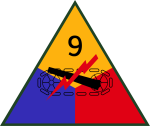 offensive fell short of its objective and resulted only in securing bridgeheads over the Meuse and Waal. It also served to bring the British Second and Canadian First Armies generally on a line with the US 12th Army Group to the south. South of the Ardennes, the US 3-A had reduced Metz and bypassed its surrounding fortresses, which were reduced by December 13, and advanced to the Saar River and made contact with the West Wall over a 16-mile area. There it halted for regrouping and resupply and prepared for an attack that was scheduled to jump off on December 19.
offensive fell short of its objective and resulted only in securing bridgeheads over the Meuse and Waal. It also served to bring the British Second and Canadian First Armies generally on a line with the US 12th Army Group to the south. South of the Ardennes, the US 3-A had reduced Metz and bypassed its surrounding fortresses, which were reduced by December 13, and advanced to the Saar River and made contact with the West Wall over a 16-mile area. There it halted for regrouping and resupply and prepared for an attack that was scheduled to jump off on December 19.
On the US 3-A’s right flank the US 6-AG composed of the US US 7-A and the French 1-A by a series of attacks through the month of November succeeded in gaining the upper reaches of the Rhine River at Strasbourg. These offensives encountered severe resistance and the cost in men and supplies was heavy. As the intensity of the fighting increased the manpower problem increased to plague the Allied High Command. Britain, her human resources impoverished by five years of war, of which three years were a series of bitter defeats, had long since scraped the bottom of its manpower barrel. France had yet to recuperate from four years of occupation by the Germans. The only remaining source was the United States. Early in October, Gen George C. Marshall, US Chief of Staff, visited the Allied Armies in the Western Front. He discovered that many divisions had been in almost constant combat since the Normandy landing and consequently ordered shipped immediately the regiments of 9 of 11 infantry divisions still in training in the States. Committed to a global war, the United States, while wealthy in manpower resources was having difficulty meeting the requirements of properly trained divisions and reinforcements necessary for the global effort.
Calculated risks are inherent in all military operations. This was no exception. If offensives were to be mounted sufficient troops must be provided to mount them. This then necessitated heavy concentrations in certain vital areas. Since available divisions were insufficient to defend properly the entire Western Front, some areas must then be thinly held. The area chosen was the Belgian Ardennes, It was an area well suited to defense and poorly suited to offense. No objectives of importance were located in the rear of the lines within reasonable striking distance of the Germans. True, the Germans had attacked the region during World War One (1914) and again during World War Two (1940), but things were different then. In both instances, the German war machine was at the height of its efficiency. Now, it had been badly defeated the preceding summer in France. It was not likely to risk its slender resources in an area where the prospect of decisive gain offered as little hope.
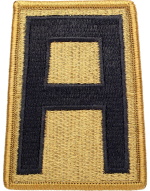
 Meanwhile, the US 1-A continued to use the Ardennes sector as a rest area for its battle weary divisions, also to provide newly arrived units further training in contact with the enemy in a quiet sector. On December 13, the US 1-A was composed of three Army Corps, the VII Corps, on the north, was adjacent to the US 9-A, the V Corps, in the center, and on the south, the VII Corps (Gen Troy H. Middleton). The VIII Corps had come under the US 1-A control on October 22, 1944, when the US
Meanwhile, the US 1-A continued to use the Ardennes sector as a rest area for its battle weary divisions, also to provide newly arrived units further training in contact with the enemy in a quiet sector. On December 13, the US 1-A was composed of three Army Corps, the VII Corps, on the north, was adjacent to the US 9-A, the V Corps, in the center, and on the south, the VII Corps (Gen Troy H. Middleton). The VIII Corps had come under the US 1-A control on October 22, 1944, when the US 
 9-A which had for a short period operated in the southern part of the Ardennes following its release from the Brittany Peninsula, moved north adjacent to US 1-A’s left flank. Originally composed of three infantry divisions, the 4, 8, and 83, there had been a constant change in its order of battle as battle-scarred divisions replaced those in the line, while the replaced divisions went north to partake in the offensives being mounted in the Aachen sector. On September 30,
9-A which had for a short period operated in the southern part of the Ardennes following its release from the Brittany Peninsula, moved north adjacent to US 1-A’s left flank. Originally composed of three infantry divisions, the 4, 8, and 83, there had been a constant change in its order of battle as battle-scarred divisions replaced those in the line, while the replaced divisions went north to partake in the offensives being mounted in the Aachen sector. On September 30, 
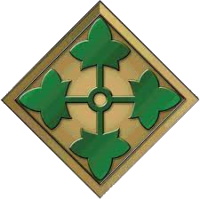 2nd Infantry Division replaced the 4th Infantry Division while the 4-ID moved northward to be badly mauled in the Hurtgen Forest.
2nd Infantry Division replaced the 4th Infantry Division while the 4-ID moved northward to be badly mauled in the Hurtgen Forest.
On November 14, the 28th Infantry Division after severe losses in the fighting in the Hurtgen Area relieved the 8th Infantry Division in the 
 center of the VIII Corps sector, while the 8-ID went northward to participate in the fighting southeast of Aachen. On December 12, the 4-ID was removed from the line after heavy casualties and replaced the 83-ID on the south flank of the Corps sector.
center of the VIII Corps sector, while the 8-ID went northward to participate in the fighting southeast of Aachen. On December 12, the 4-ID was removed from the line after heavy casualties and replaced the 83-ID on the south flank of the Corps sector.
 The 83-ID (Gen Robert C. Macon) moved northward to take over the area formerly held by the 4-ID (Gen Raymond O. Barton).
The 83-ID (Gen Robert C. Macon) moved northward to take over the area formerly held by the 4-ID (Gen Raymond O. Barton).  On the north flank lay the 2nd Infantry Division (Gen. Walter M. Robertson). On December 10, the 106th Infantry Division (Gen Allan W. Jones) relieved the 2-ID while the second moved northward to participate in the attack on Schmidt. The 14th Cavalry
On the north flank lay the 2nd Infantry Division (Gen. Walter M. Robertson). On December 10, the 106th Infantry Division (Gen Allan W. Jones) relieved the 2-ID while the second moved northward to participate in the attack on Schmidt. The 14th Cavalry  Group was attached to the 106-ID and placed on its left flank. It filled a small gap in the line, and ‘being mobile, the Cavalry
Group was attached to the 106-ID and placed on its left flank. It filled a small gap in the line, and ‘being mobile, the Cavalry 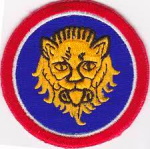 would maintain contact with the attacking 99th Infantry Division (Gen Walter E. Lauer)-ID on its left flank.
would maintain contact with the attacking 99th Infantry Division (Gen Walter E. Lauer)-ID on its left flank.
The demand for additional divisions in the offensives in the Aachen Area (Hürtgen Forest) was so great that the 106-ID was brought over from England ahead of schedule. Landing on the continent early in December it had been transported by trucks to its positions facing the West Wall in bitter and already freezing weather.  Untried in battle, not acclimated to the severity of an Ardennes Winter it was ill-prepared for the blow it was to receive less than a week later. In mid-October, the 9th Armored Division (Gen John W. Leonard) was assigned to VIII Corps to provide a reserve for the defense. Its three combat commands were spread over the 80-mile sector. On December 12, Combat Command B of the division moved northward to provide a reserve and an exploitation force for the offensive being launched toward the Roer River dams on December 13. On December 10, CCA had gone into the line on the 28-ID’s right flank.
Untried in battle, not acclimated to the severity of an Ardennes Winter it was ill-prepared for the blow it was to receive less than a week later. In mid-October, the 9th Armored Division (Gen John W. Leonard) was assigned to VIII Corps to provide a reserve for the defense. Its three combat commands were spread over the 80-mile sector. On December 12, Combat Command B of the division moved northward to provide a reserve and an exploitation force for the offensive being launched toward the Roer River dams on December 13. On December 10, CCA had gone into the line on the 28-ID’s right flank.















